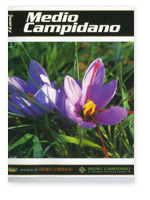Skip navigation bar and go to contents
Vivere la campagna
 Agricoltura
Agricoltura
 Ambiente
Ambiente
 Bilancio e Patrimonio
Bilancio e Patrimonio
 Consigliera di Parità
Consigliera di Parità
 Cultura
Cultura
 Formazione Professionale
Formazione Professionale
 Immigrazione/Emigrazione
Immigrazione/Emigrazione
 Innovazione Tecnologica
Innovazione Tecnologica
 Lavori pubblici e Viabilità
Lavori pubblici e Viabilità
 Lavoro
Lavoro
 Personale
Personale
 Pianificazione Territoriale
Pianificazione Territoriale
 Politiche giovanili
Politiche giovanili
 Politiche Sociali
Politiche Sociali
 Protezione civile
Protezione civile
 Pubblica Istruzione
Pubblica Istruzione
 Sport
Sport
 SUAP
SUAP
 Trasporti
Trasporti
 Turismo
Turismo
 URP
URP

n. 26/2009 -
The Medio Campidano, with its many scattered villages and small towns,has no imposing cathedrals but rather a host of religious buildings and churches in line with its agro-pastoral vocation and economy. For the most part the churches date back to the period of the Giudicati (Medieval kingdom) and the subsequent Aragonese domination. Religious architecture developed following the main construction techniques brought over time first by the Victorine monks, later by the Franciscans and finally by the Aragonese. Thus, the Romanesque style of the 1200s was followed by the Gothic style starting from the 1300s. However, neither of these styles was expressed in its pure form but was rather adapted to the local context, geographically isolated and with limited economic resources. Often, different construction techniques were combined, creating original structures, harmoniously set within the viIlage layout. The shift from Romanesque to Gothic is evident in the churches of San Gregorio at Sardara and Carmine at Mogoro date between the late 13th and early 14th centuries. Another fine example of Romanesque art of the 1200s is the church of San Pietro at ViIlamar with its two naves, each ending with an apse. At Samassi the church of San Geminiano was built in Romanesque and Pisan Gothic style. Some Arab decorative elements were later added to it, such as the small hanging arches and carved decorations. Catalan-Aragonese influence spread during the 1400s: some distinctive features are the single-nave rectangular ground plan with cross vaults, side chapels, capilla mayor, flat façade often crowned by merlons, rose windows and square bell tower, as can be seen in the parish church of San Giovanni Battista at ViIlamar. Another example of Aragonese Gothic style is the parish church of Guspini, built in the first half of the 17th century; its rectangular facade is decorated with merlons and, at the centre, by a fine rose window above the portal. The layering of styles common to many churches in the Medio Campidano and Trexenta is particularly evident in the parish church of Santa Giusta at Gesico, which has a Romanesque façade and a campanile in Pisan style, while the interior is Aragonese Gothic.The Church of Sant'Antonio at Tuili is very distinctive, presenting clear signs of Spanish style in both its architectural structure and interior. Not to be missed is its fine carved wooden Baroque altar. In the 1500s, Renaissance and Mannerist influences came into play, and can be admired in the monumental altars in polychrome marble and in the addition of chapels between nave buttresses. This influence can be seen for instance in the parish churches of Santa Barbara at Villacidro, Maria Immacolata at Serrenti, Nostra Signora delle Grazie at Sanluri with its Gothic bell tower later adapted to the Baroque style, and in the church of San Giovanni Battista at Lunamatrona. Then there are the charming small country churches scattered throughout the Province; they come to life during the deeply felt religious festivals mainly held in the summer months. A fine example is the Romanesque church of San Michele Arcangelo (13th century) at Siddi: this small building (11.60 x7.30 m) has two naves; the architrave of the left portal is decorated with a series of sculpted reliefs, showing five mysterious human figures set in decorated niches. One of these figures is turned upside down, making this series a unique example in the panorama of Sardinian medieval, sculpture.Santa Severa, at Gonnosfanadiga, dates back to the early centuries of Christianity. It has a Latin cross ground plan and the centre of the nave is surmounted by a round dome. In the countryside round Villamar stands the small church of Nostra Signora d'ltria, presumably dating back to the 12th century, with an unusual façade divided into two orders. At Villacidro, in the charming countryside near Lake Leni is the church of San Sisinnio, flanked on either side and at the back by a portico, similarly to the small church of Santa Maria di Monserrato on the outskirts of Serramanna.